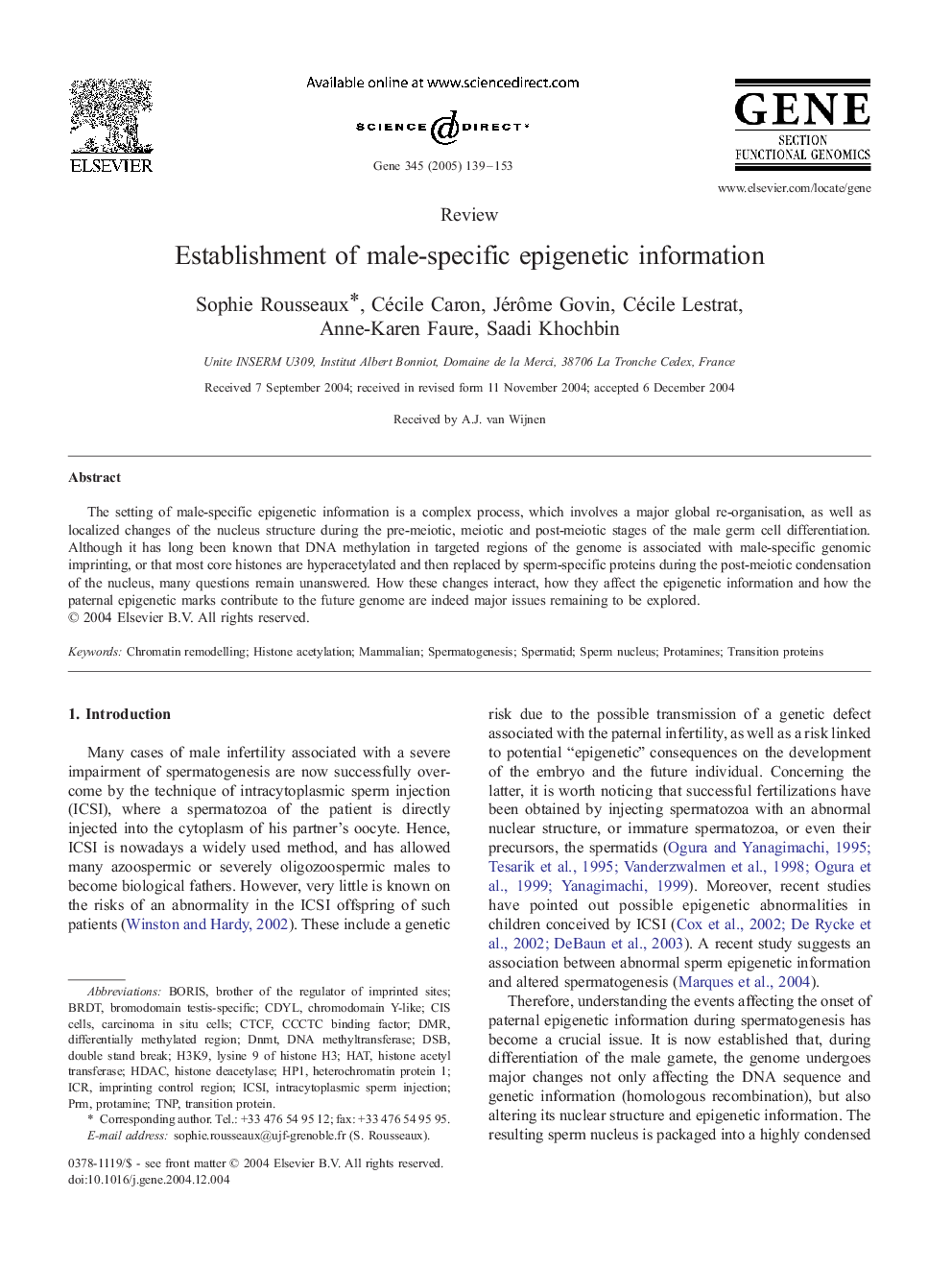| Article ID | Journal | Published Year | Pages | File Type |
|---|---|---|---|---|
| 9127228 | Gene | 2005 | 15 Pages |
Abstract
The setting of male-specific epigenetic information is a complex process, which involves a major global re-organisation, as well as localized changes of the nucleus structure during the pre-meiotic, meiotic and post-meiotic stages of the male germ cell differentiation. Although it has long been known that DNA methylation in targeted regions of the genome is associated with male-specific genomic imprinting, or that most core histones are hyperacetylated and then replaced by sperm-specific proteins during the post-meiotic condensation of the nucleus, many questions remain unanswered. How these changes interact, how they affect the epigenetic information and how the paternal epigenetic marks contribute to the future genome are indeed major issues remaining to be explored.
Keywords
DSBHP1CCCTC binding factorBRDTH3K9CTCFPRMDnmtDMRICRTNPTransition proteinsHDACDNA methyltransferaseHistone acetylationSpermatogenesisSpermatidChromatin remodellingBORISintracytoplasmic sperm injectionDifferentially methylated regionICSIsperm nucleushistone acetyl transferasehistone deacetylaseheterochromatin protein 1Transition proteinProtamineProtaminesmammalian HATImprinting Control Region
Related Topics
Life Sciences
Biochemistry, Genetics and Molecular Biology
Genetics
Authors
Sophie Rousseaux, Cécile Caron, Jérôme Govin, Cécile Lestrat, Anne-Karen Faure, Saadi Khochbin,
